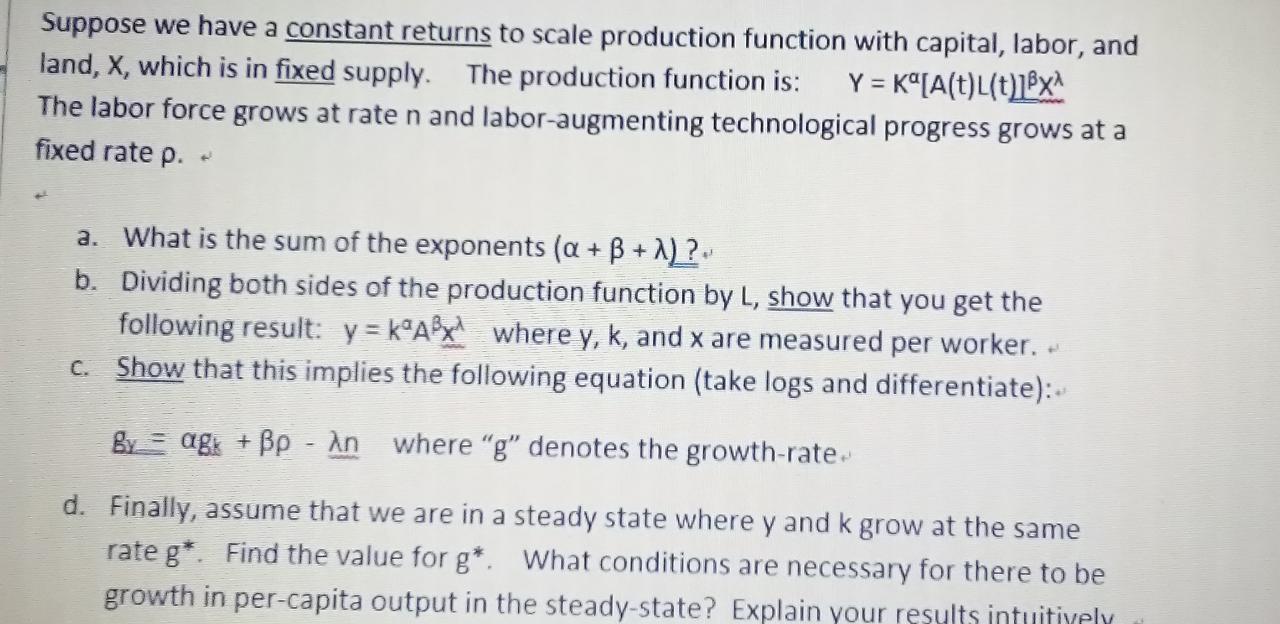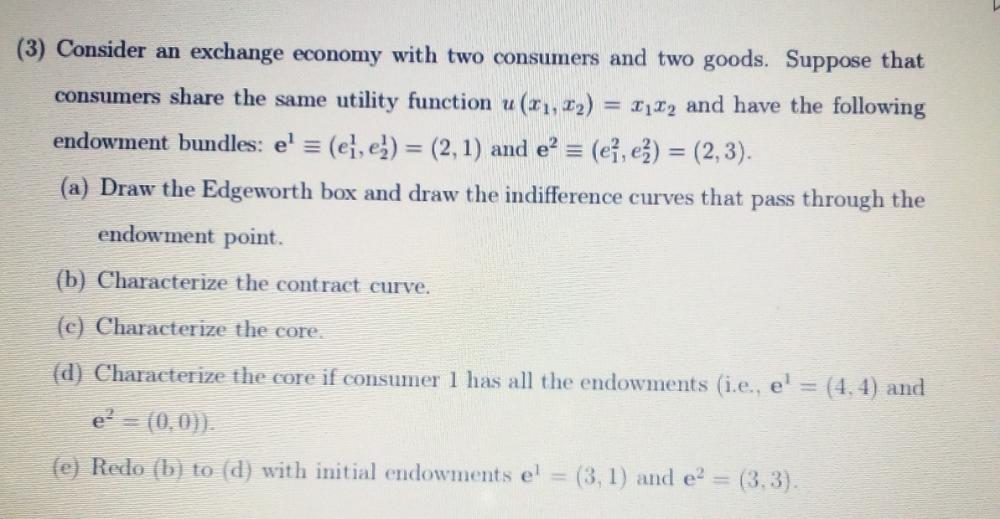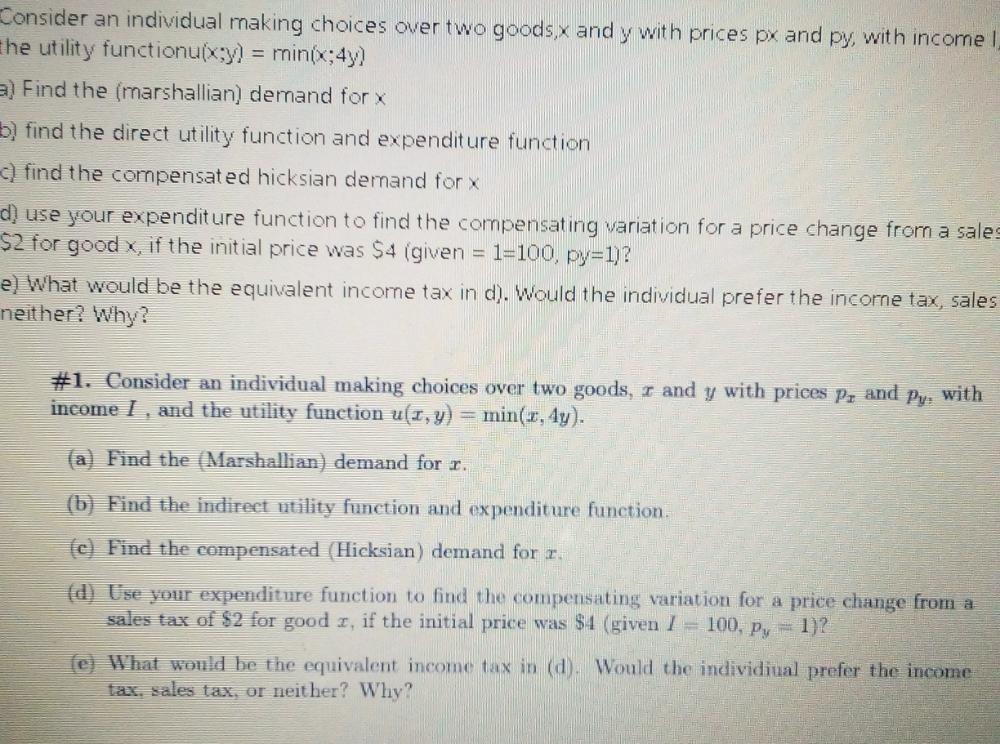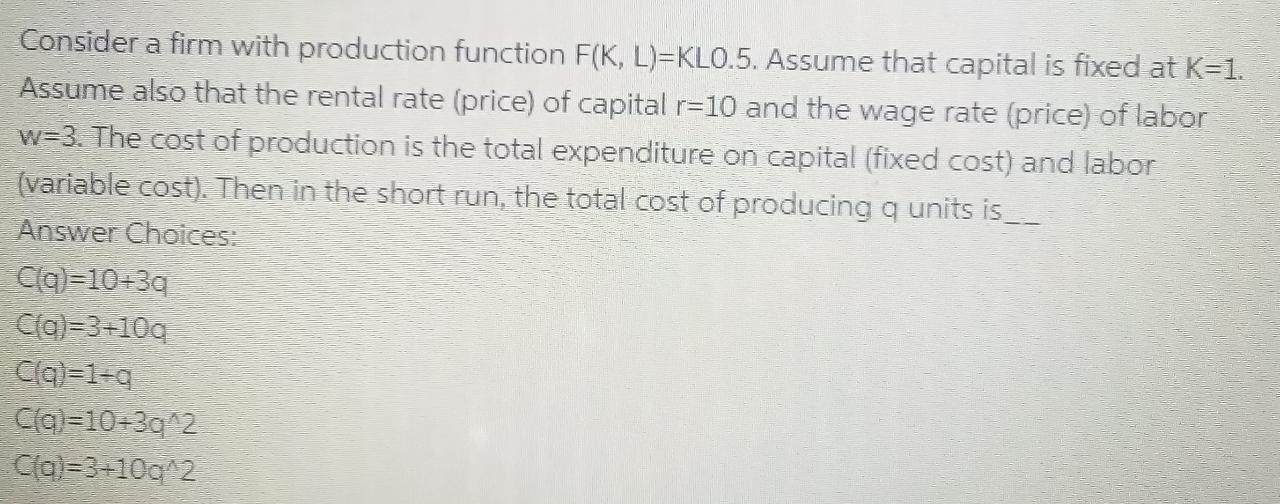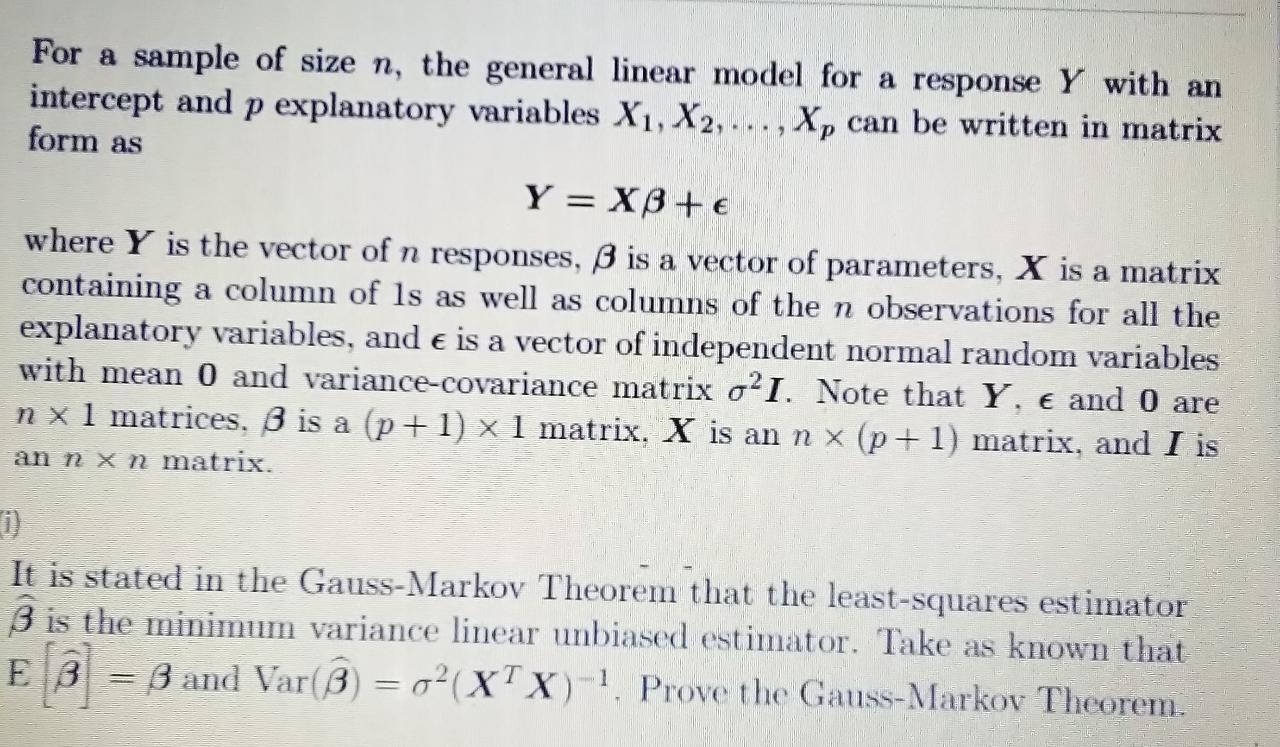Please help. Its urgent. Kindly show your workings
Suppose we have a constant returns to scale production function with capital, labor, and land, X, which is in fixed supply. The production function is: Y = K"[A(t)L(t)18xx The labor force grows at rate n and labor-augmenting technological progress grows at a fixed rate p. a. What is the sum of the exponents (a + B + A)?. b. Dividing both sides of the production function by L, show that you get the following result: y = k"A x where y, k, and x are measured per worker. c. Show that this implies the following equation (take logs and differentiate):. By = ag + Bp - An where "g" denotes the growth-rate. d. Finally, assume that we are in a steady state where y and k grow at the same rate g*. Find the value for g*. What conditions are necessary for there to be growth in per-capita output in the steady-state? Explain your results intuitively(3) Consider an exchange economy with two consumers and two goods. Suppose that consumers share the same utility function u (r,, 12) = 12, and have the following endowment bundles: el = (e], e;) = (2, 1) and e? = (e], e?) = (2,3). (a) Draw the Edgeworth box and draw the indifference curves that pass through the endowment point. (b) Characterize the contract curve. (e) Characterize the core. d) Characterize the core if consumer I has all the endowments (i.e., e = (4.4) and e' = (0.0)). e) Redo (b) to (d) with initial endowments el = (3, 1) and e? = (3,3)Consider an individual making choices over two goods,x and y with prices px and py, with income I the utility functionu(x;y) = minix;4y] ) Find the (marshallian) demand for x ) find the direct utility function and expenditure function () find the compensated hicksian demand for x dj use your expenditure function to find the compensating variation for a price change from a sale $2 for good x, if the initial price was $4 (given = 1=100, py=1)? e) What would be the equivalent income tax in d). Would the individual prefer the income tax, sales neither? Why? #1. Consider an individual making choices over two goods, r and y with prices p, and py, with income / , and the utility function u(z, y) = min(z, 4y). (a) Find the (Marshallian) demand for r. (b) Find the indirect utility function and expenditure function. (c) Find the compensated (Hicksian) demand for r. (d) Use your expenditure function to find the compensating variation for a price change from a sales tax of $2 for good r, if the initial price was $4 (given ] - 100, py = 1)? e What would be the equivalent income tax in (d), Would the individual prefer the income tax, sales tax, or neither? Why?Consider a firm with production function F(K, L)=KLO.5. Assume that capital is fixed at K=1. Assume also that the rental rate (price) of capital r=10 and the wage rate (price) of labor w=3. The cost of production is the total expenditure on capital (fixed cost) and labor (variable cost). Then in the short run, the total cost of producing q units is_ Answer Choices: Cla)=10+3q C(a)=3+10q Cla)=1-q C(q)=10+3942 C(a)=3+10g/2For a sample of size n, the general linear model for a response Y with an intercept and p explanatory variables X1, X2, .. ., Xp can be written in matrix form as Y = XB+E where Y is the vector of n responses, B is a vector of parameters, X is a matrix containing a column of Is as well as columns of the n observations for all the explanatory variables, and e is a vector of independent normal random variables with mean 0 and variance-covariance matrix o'I. Note that Y, e and 0 are n x 1 matrices, B is a (p + 1) x 1 matrix. X is an n x (p + 1) matrix, and I is an n x n matrix. It is stated in the Gauss-Markov Theorem that the least-squares estimator 3 is the minimum variance linear unbiased estimator. Take as known that E 3 = 3 and Var(3) = 62(XTX)-1, Prove the Gauss-Markov Theorem
